Rome, Pyramid of Cestius
Q725404Pyramid of Cestius: famous funeral monument in Rome.
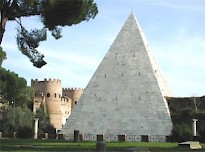
The pyramid of Cestius was built during the reign of the emperor Augustus, probably between 18 and 12 BCE. It is a remarkable monument, made of white Carrara marble and exactly 100 Roman feet (30 meters) high. On the first photo, the pyramid can be seen from the Protestant cemetery, which is southwest of the tomb. In the background is the Porta Ostiensis.
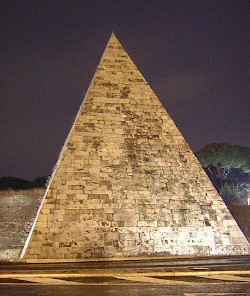
The second photo shows the Pyramid of Cestius from the east. There is an inscription, CIL VI.1374, on this side of the monument; it is repeated on its northwestern side.
C. Cestius L.F. Pob. Epulo pr. tr.pl.
VII vir epulonum
Opus apsolutum ex testamento diebus CCCXXX arbitratu
L. Ponti P.F. Cla. Melae heredis et Pothi L.
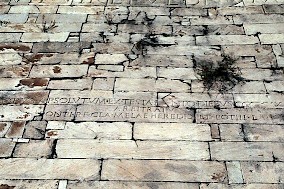
Which means:
Gaius Cestius Epulo, son of Lucius, of the Poblilian district, praetor, tribune of the people, official of the public banquets. According to his will, this work was completed in three hundred and thirty days; it was executed by his heirs L. Pontus Mela, son of Publius, of the Claudian district, and his freedman Pothus.
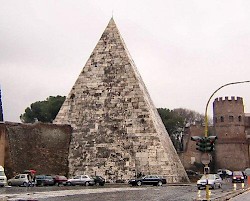
The Pyramid of Cestius and the Porta Ostiensis (to the right) seen from the railroad station in the south. You can see that the monument was converted into a bulwark in the Wall of Aurelian, which was built after 270. In the seventeenth century, when a tunnel was added to the defense works, the funerary chamber of the pyramid was discovered. It turned out to contain wall paintings in what was later called the Third Pompeian style. Pope Alexander VII ordered restorations, which are also commemorated in an inscription.
Compared to the real, Egyptian pyramids, the Pyramid of Cestius is too steep and too pointed. This explains why in the Middle Ages and Renaissance, pictures of ancient Egypt also contained too pointed monuments: the only place where European artists could see a pyramid, was at Rome, and Cestius' mausoleum did not have the right proportions. A famous mosaic in the San Marco in Venice, with a scene from the Biblical story of Joseph in Egypt, shows the pyramids - the artist has really done his best tried to make it look Egyptian - but they are clearly based on the Pyramid of Cestius.
The last picture shows another example, which shows the influence of the error. These pyramids and sphinx were drawn by Cornelis de Bruijn, who had actually visited Egypt. On his return to Holland (after a visit to Venice) in 1698, he must have started to doubt his own drawings, because when he published his book, he made the pyramids pointed again.
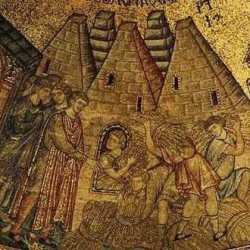 Venice, San Marco, Mosaic with Joseph and the Pyramids of Egypt |
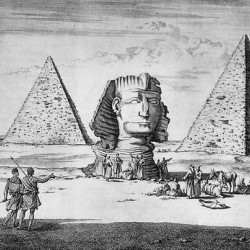 Giza |